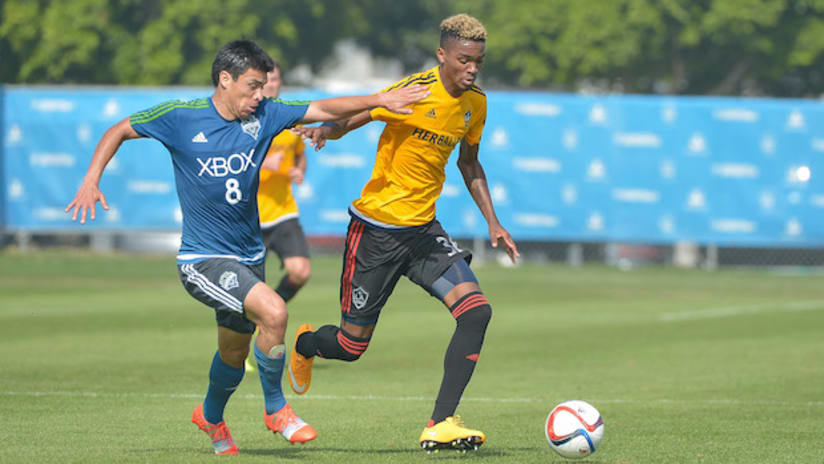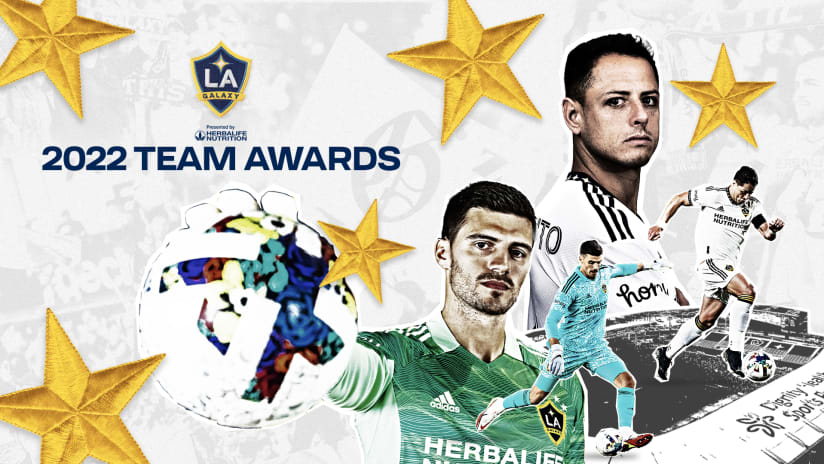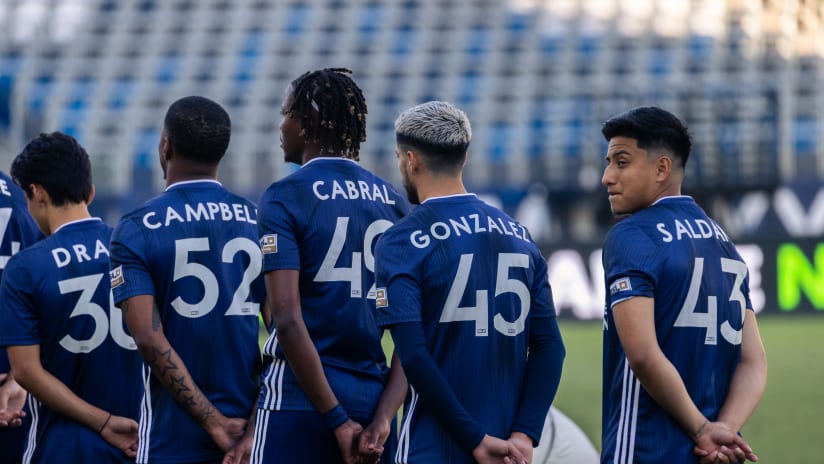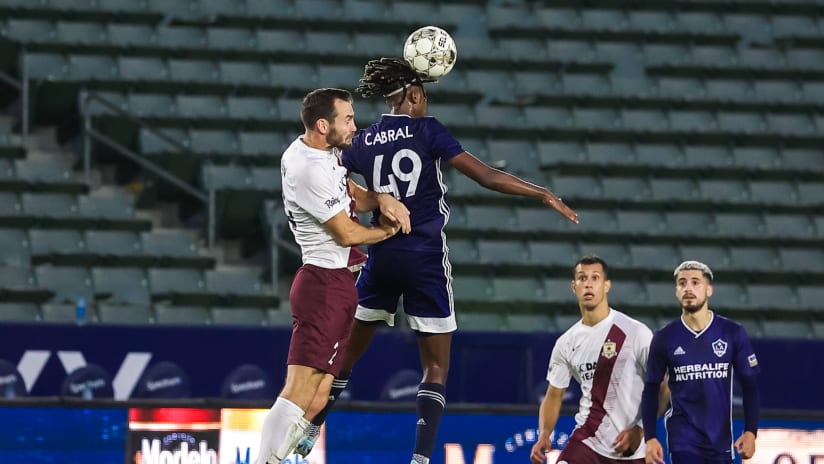The topic of youth development in soccer is a wide-ranging and deep discussion with multiple schools of thought. Each ideology holds different merits, with the debate an ever-changing one amongst students of the game.
Back in 2006, Major League Soccer took its first steps into the field of youth development, with the Homegrown Player initiaive, a rule that allowed teams to acquire players outside of the annual draft from their respective local academies.
Speaking at the time, MLS Deputy Commissioner Ivan Gazidis hailed it as ‘a major step forward for player development in the United States.
In 2014, the LA Galaxy made what it believes to be the next step in that process by announcing the creation of LA Galaxy II. Los Dos, as the team is affectionately known, is a second team that would compete in the USL and give young players a chance to play competitive soccer.
“It was first discussed a couple of years ago,” LA Galaxy Technical Director Jovan Kirovski explained when asked how long the project had been discussed by the club’s hierarchy.
<br><img alt="" src="https://losangeles-mp7static.mlsdigital.net/mp6/chats/052805_LA_GALAXY_EG__2002.JPG" style="float: right; width: 200px;"> |
<em>Jovan Kirovski</em> |
It was a move that mirrored that of clubs in Europe such as Ajax Amsterdam, Barcelona, and Bayern Munich, Kirovski noted how these global leaders in youth development were closely studied prior to launching Galaxy II.
“At the moment I’m on a UEFA Youth Development course,” Kirovski said. “It’s a two-year course and in the process, I’ve been at Real Madrid, the French club Bordeaux, and Valencia. I was taking in their ideas, their setup, their philosophy and picking out the pieces that fit for us and make sense for us to implement into our club.”
Kirovski explains how Spanish giants Real Madrid were by far the most impressive stop on his tour of Europe, however his praise comes amid a promise that the club is eager to forge its own identity.
“We’re not going to take everything that Real Madrid does and try to do it in our club,” he explains. “It’s a different culture, the kids grow up differently, but it just opens you up to different ideas [visiting these places]. We want to be the best and it was an interesting process.”
The same can also be said on the pitch, where Los Dos will aim to mirror the tactical approach of their counterparts in the senior side.
“We want to play a soccer that’s creative and attractive to watch but we also want to win championships and win games,” Kirovski explained. “It’s easy for people to come out and say that but it’s much harder to do it. It’s a process and it takes time but that’s the direction we’re aiming to go.”
Having finished their inaugural season, Kirovski has already seen the positive impact Los Dos is having.
“We’ve already seen it,” he explained. “We’ve had players from our first team come down and play, guys from our second team go up. It keeps them hungry and they know what thy have to do.
“We’ve had academy players come up into the second team. As we move forward it’s going to get better and better. I don’t think its’ only going to help our club but the country in general.”
A professional player himself for almost two decades, Kirovski had first hand experience of second teams during his career. Joining German side Borussia Dortmund in 1996, he later enjoyed a spell in Portugal with Sporting Clube de Portugal, where both currently operate second teams.
Although Sporting themselves have raised concerns of late regarding the financial demands of the second team, it is estimated that the club has received in the region of €37.5 million euros ($43.3million) in transfer fees for players raised in it’s B-team, at a modest cost of €1.8 million ($2.08 million) per annum.
Speaking in the FPF 360 magazine, Fernando Gomes, Portuguese Football Federation President, said: “The introduction of the B teams in the Segunda Liga (Portuguese 2nd tier) has allowed a group of young players to have a much better competitive space and has led to good results in the U21 and U19 national teams.”
With positive reviews from the likes of Gomes, it is understandable why a host of teams in Major League Soccer feel the path is one they should travel.
“I think there’s a few things that put my mindset in that way [towards second teams],” Kirovski added. “The system we have here with the college game, that’s been the only place that kids can go and develop. A lot of kids have developed through that way, but that doesn’t meant the development process was good, and it could be better.”
However, as a graduate of Manchester United’s system, his first exposure to youth development came via the reserve team format. With England debating the introduction of B-teams earlier this year, Kirovski admitted that his own experiences deterred him from the belief that the English approach is the best option for youth development.
“I remember playing in reserve games [in England] and they were like the reserve games we have here in MLS,” he explained. “There wasn’t any pressure and we need an environment where the kids go out and feel that pressure in the matches so every game means something.
“We’re a little different also with the college game, where these kids need that kind of professional atmosphere.”
It is a system with which forward Kainoa Bailey is all too familiar. After spells at Real Salt Lake, Brazilian side Cruzeiro, and D.C. United, Bailey moved to German side Bayer Leverkusen where he spent time with their second team.
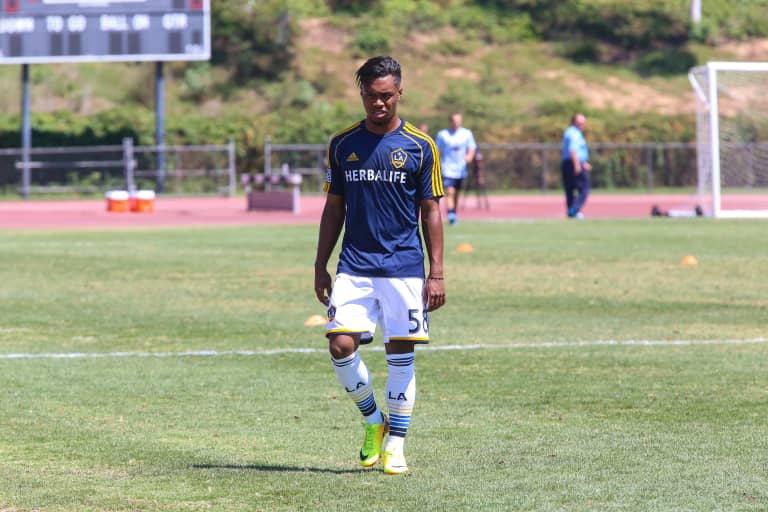
Kainoa Bailey (Photo Credit: Hana Asano)
“The level was very high,” Bailey explains. “Leverkusen has a really good youth system in Germany. The players that were on my team I think at least four or five were on the German national team and three or four were on the Turkish national team. There was a lot of good experienced players.”
Having sampled both processes himself, Bailey is adamant that the approach in Germany far outstrips that of youth and reserve teams.
“My game went to another level tactically when I was at Leverkusen,” he explains. “There were days where we’d do tactics only. The youth systems where I was in D.C. and Real Salt Lake they didn’t focus on it too much but they don’t stress it enough from my experience.”
“Every training we did a passing drill and the precision and the speed of the ball was a lot higher. I spent a lot of time working on my passing.”
However, the praise for this approach is not unanimous.
At Bailey’s former club, Bayer Leverkusen, the second team has since been dissolved. Changes in regulations meant that the teams were no longer compulsory, with Sporting Director and former German international Rudi Völler explaining the decision in an interview.
"We realized that our top talents can't manage the leap to the professional squad via our second team.”
While Kirovski acknowledges that may be the case in Germany, where second teams play in the fourth tier of professional soccer, he does not feel the same can be said in the United States.
“I think it’s not [applicable] for us. We want them in a real professional environment which college soccer is not,” he said. “They don’t play enough [in college soccer]. The gap there [Germany] is different to the gap here.”
Instead the 38-year-old favors comparison to teams such as Ajax in the Netherlands.
‘Jong Ajax’ represent a similar blend of young talents and first team players and ply their trade in the Eerste Divisie, one level below the Dutch top flight.
Coached by former Ajax defender Jaap Stam, the club has consistently sought to include former players in their youth development system. However in choosing a coach, one must select carefully. While many former Ajax players have moved into the realm of coaching, not all have spent time at their former club.
Picking the right candidate is a vital process and in Curt Onalfo, Kirovski feels he has the ideal one.

Curt Onalfo (Photo Credit: Robert Mora)
“I don’t think people understand how well of a job he has done,” Kirovski enthuses. “He doesn’t have the same team every week which most teams do and he really works on guys getting to know each other and makes it much easier.”
Those sentiments are echoed by one of his young players, Bradford Jamieson IV.
“Working with Curt I think it was a good experience,” the 18-year-old explained. “He’s an experienced coach and even as a player he has a lot of knowledge under his belt.”
Jamieson has produced a number of standout performances during the past season, earning him his first taste of action with the senior squad in the 2-1 defeat to Sporting KC in July. Having signed a Homegrown Player contract, the youngster revealed that the chance to remain close to his native Los Angeles was one he could not turn down.
“I did have some chances on the horizon in terms of going to Europe, but as far as exploring them, I felt the option to stay here was the best one,” he explains. “I now realize how hard it would have been to move across the world or even the nation without the support system that I depend on greatly. To not only develop where you’ve grown up, but also develop well was a huge plus.”
While Bailey’s situation is somewhat different, he represents one of a number of young Americans eager to return home to continue their development.
Now able to receive regular playing time, at a competitive level with the promise of MLS opportunities if he thrives, Bailey is excited for the coming season after arriving with just a few games remaining of the debut campaign, with the Las Vegas native feeling second teams are an important next stage in developing talent in America.
<img alt="" src="https://losangeles-mp7static.mlsdigital.net/mp6/chats/091314_LA_GALAXY_II_RM_0029.JPG" style="width: 400px; height: 266px; float: left;"> |
<em>Bradford Jamieson IV (Photo Credit: Robert Mora)</em> |
That enthusiasm is shared by Kirovski, who admits the team has learned some important lessons after their debut campaign, one in which they fell at the semifinal stage to eventual USL Pro Championship winners, Sacramento Republic.
“When we built this team we built it in two months so we didn’t quite know the level of the USL,” he explains. “We had a few older players to teach our younger players how to be pros. We feel now we might be able to compete even a little bit younger and we want to try and give more chance to our academy players that we can push.”
Just like his counterparts at other clubs, Kirovski dreams of one day being able to name a first XI consisting solely of players produced in-house, however for now he is just eager to watch the project continue to flourish.
“The talent that we have in the Southern California we feel is probably the best we have in the country. Our goal is to have as many guys from our academy in our first team as possible.”

